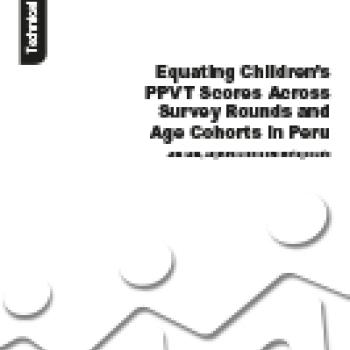
Young Lives gathers information from children and families through household and child questionnaires as well as children’s cognitive and achievement tests. The Peabody Picture Vocabulary Test (PPVT) has been used in all survey rounds to date and with both age cohorts. This technical note presents the psychometric analysis performed (using Item Response Theory, IRT) in order to build cognitive measures comparable across Rounds 2 and 3 and the Younger and Older Cohorts for Peru. To achieve this, a one-parameter IRT model was used. We were able to identify a set of items across difficulty levels with good item fit as well as without item bias by gender and round. This set of items was used to equate the PPVT scores across rounds and age cohorts. Finally, we did an external validity analysis correlating the one-parameter PPVT scores with individual and family characteristics and the results showed that correlations were statistically significant with the expected signs.

Young Lives gathers information from children and families through household and child questionnaires as well as children’s cognitive and achievement tests. The Peabody Picture Vocabulary Test (PPVT) has been used in all survey rounds to date and with both age cohorts. This technical note presents the psychometric analysis performed (using Item Response Theory, IRT) in order to build cognitive measures comparable across Rounds 2 and 3 and the Younger and Older Cohorts for Peru. To achieve this, a one-parameter IRT model was used. We were able to identify a set of items across difficulty levels with good item fit as well as without item bias by gender and round. This set of items was used to equate the PPVT scores across rounds and age cohorts. Finally, we did an external validity analysis correlating the one-parameter PPVT scores with individual and family characteristics and the results showed that correlations were statistically significant with the expected signs.

